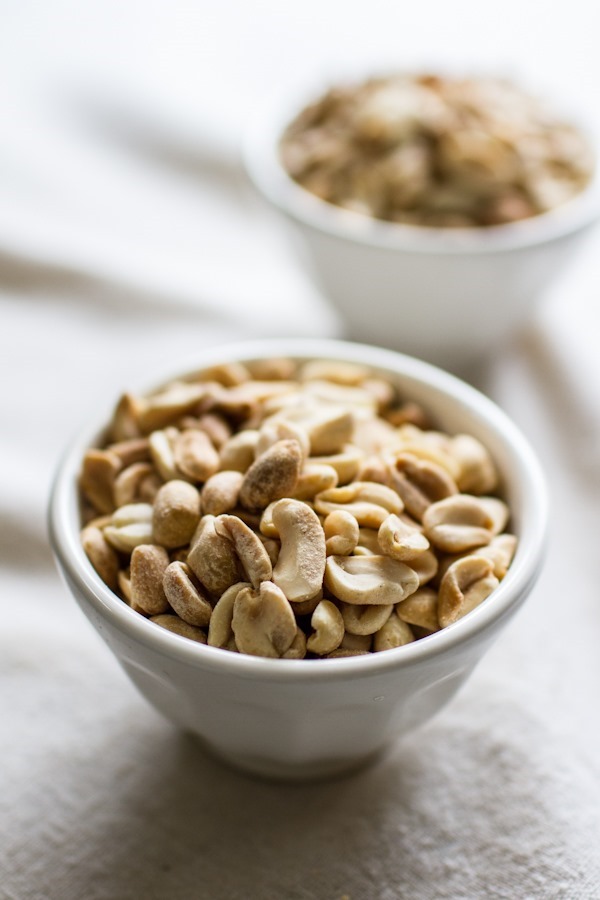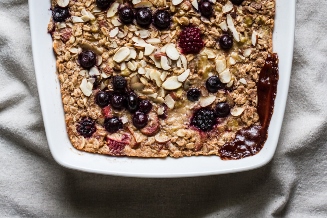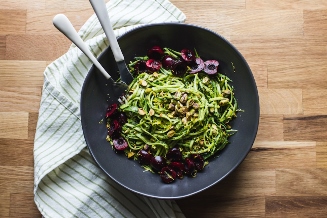Food Photography Tip of the Week |8|
/Food Photography Tip of the Week |8|
How to take sharp photos.
I receive frequent questions and hear many people—including myself—talk about their photos not being as sharp as they’d like. So, I figured I would try and get to the bottom of why this may be.
The answer: Unfortunately, there is no easy solution. There are at least 5 different reasons your photos are not as sharp as you’d like. But, the good news? I’m here to break down the probable causes and fixes in a few different posts. I wanted to break down each in a separate post to keep things as simple as possible. And this way you can try one idea at a time.
Solution #1: Increase your depth of field.
Depth of Field – portion of your photo that is in focus
Remember:
- the lower the aperture [f-stop] numbers –> the wider the lens opening –> the shallower the depth of field [less in focus]
- the higher the aperture [f-stop] numbers –> the narrower the lens opening –> the deeper the depth of field [more in focus]
So why would increasing your depth of field make your photos sharper? There are 2 main reasons.
- More of your photo is in focus. Simple as that.
- I know you probably want that creamy, soft, blurred [bokeh] background and think that your aperture needs to be at 2.8 or lower to achieve it. However, when you set your aperture this low and stand 18-inches away from your subject, you would be surprised to know that [with a 50mm lens] only .33-inch of your photo is in focus. And actually, it’s .16-inch in front of and behind the actual spot you’ve focused on. And if you’re standing closer than 18-inches to your subject even less of the image will be in focus. Check out a depth of field calculator to see what I mean.
- Lenses often have a sweet spot for sharpness.
- Usually this sweet spot is quite large, but it’s typical that the smallest and largest f-stop numbers won’t be as crisp as if you step it up or down a few notches. When the lens is pushed to its limits the quality of the photo slightly degrades. If you’re using a 50mm 1.8 or 1.4 [fairly common food lenses] try setting your aperture above f/2.8 and see if your photos look sharper.
Side note: Watch your minimum focus distance.
-
- Minimum focus distance is the shortest distance between your lens and your subject that your lens can focus on. It varies with every lens. You may notice sometimes that your camera is not allowing you to take a shot but if you back up just an inch the shutter activates. This is because your lens is too close to your subject and it cannot focus. Similar to pushing the limits of your aperture settings, if your lens is right at the limits of the minimum focus distance the quality of the photo is slightly degraded. Try backing up just a step or two and see if that produces a sharper image. Taking a step back will also slightly increase your depth of field. [If doing this widens the frame of your photo more than you would like you can always crop the image in post-processing.]
I encountered this problem with my Canon 50mm 1.4 all of the time and rarely set it lower than f/2.8. The image was just never as sharp as I wanted. Part of this is the quality of the lens but part is also due to what you just read above.
Let’s look at a few examples.
[I’m currently using the Canon 35mm 1.4L on my Canon 7d camera – The lens is a very new addition that I am absolutely loving.]
above: f/2.0 – ISO: 200 – SS: 1/200
With the above and below images you’ll notice I focused on the center peanut that has a vertical positioning. While the center peanut does show sharpness and detail in that above image you’ll notice that the very top edge is slightly soft. This is because my depth of field was set to be very shallow and hardly any of the image is actually in focus.
Step up the aperture to f/4 [below image] and you’ll notice the entire center peanut is fully in focus and the detail is much sharper while still allowing a soft and creamy blurred background.
Take a look at the back bowl of peanuts and compare the two as well. In the bottom image the peanuts still take shape and you can tell what they are without really drawing your eye to them. But in the above image they’re so blurred that they are unrecognizable.
below: f/4.0 – ISO: 200 – SS: 1/80
below: f/6.3 – ISO: 400 – SS: 1/50
With an aperture at f/6.3 the depth of field widens even more, creating greater detail in the image.
above: f/2.0 – ISO: 200 – SS: 1/160
With the next two images we’re comparing the f-stop settings at f/2 and f/4. Notice the difference in sharpness of the second bowl and of the fabric in each image. You’ll see that by increasing your depth of field just slightly your image will appear much sharper. There’s a bit more texture in the fabric with the image below but it still holds a soft feel around the outer edge of the bowl and below.
If the look you’re trying to achieve is best at f/2, then by all means go ahead with that setting. This is just something to experiment with!
below: f/4.0 – ISO: 200 – SS: 1/50
above: f/2.0 – ISO: 200 – SS: 1/160
In the above image the peanuts lose their sharp edge pretty quickly. It’s almost hard to even tell which peanut was focused on. But in the image below there is a lot more detail and a sharper edge.
below: f/4.0 – ISO: 200 – SS: 1/50
Do you ever experience photos that aren’t as sharp as you’d like? Do you think this may be a possible solution for you? If not, more ideas will be coming soon!
Ashley




















